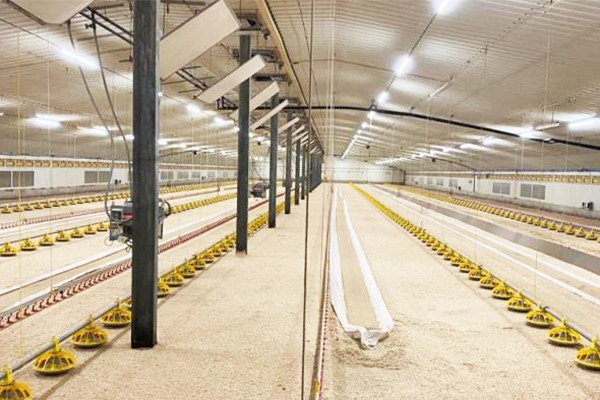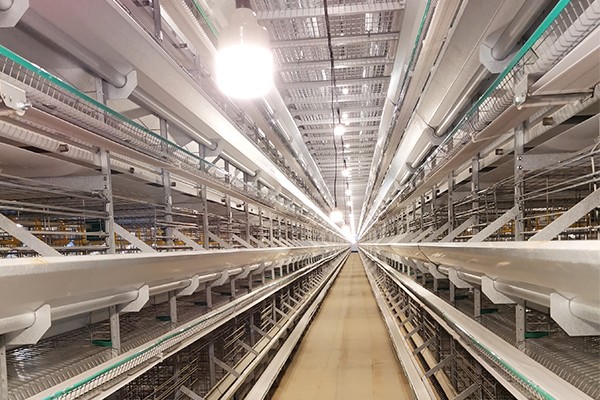LED lighting has emerged as a core part of modern poultry farm infrastructure owing to its energy efficiency and advanced control capabilities. Traditional incandescent and fluorescent bulbs utilize way more energy and generate higher levels of unnecessary heat relative to LED options. LED lights also allow farmers to control the lighting spectrum and cycle carefully. This helps influence poultry behavior, growth performance, and overall welfare. With advancements in LED lighting spectrum technology, it is now a highly controllable variable that farmers can manipulate to maximize feeding efficiency and minimize stress.
The Science Behind LED Lighting Spectrum
Understanding the science behind an LED lighting spectrum is integral to manipulating poultry behavior and productivity. The lighting spectrum refers to the specific wavelengths of light emitted. It ranges from ultraviolet to infrared. LED lights allow farmers to tune production precisely across the spectrum.
- Variations in Spectrum
LED technology enables lights to produce a wide variety of spectral compositions. Farmers can emphasize different wavelengths to elicit targeted responses from their poultry.
- Impact on Poultry Vision
Poultry has vision centered around the red and blue wavelengths on the light spectrum. Variations in the proportions of these wavelengths impact circadian rhythms and hormones linked to feeding behaviors. Specifically, targeting spectral compositions with peaks in red and blue during evening hours reliably prompts increased feed intake when poultry naturally feeds most actively.
LED Lighting Spectrum and Feeding Patterns
By modulating the poultry lighting spectrum, farmers can directly control poultry feeding behaviors and maximize productivity. Precise spectral programming allows direct impacts on feeding.
- Direct Influence on Feeding Behavior
Varying the proportions of wavelengths within the LED lighting spectrum presented to poultry can either stimulate or suppress their appetite. Certain spectral compositions intrinsically trigger hormonal and neurological signals linked to hunger and feeding drive in poultry.
- Optimizing Feeding Efficiency
Through targeted spectral programming optimized for the species and growth phase, farmers can tighten feeding windows to designated morning and evening periods when consumption can be most effectively channeled. This leads to more orderly flock intake routines and tighter nutrient scheduling.
- Stress Reduction and Well-being
Beyond intake influences, gentler transitions in the LED lighting spectrum that simulate the smooth ascending and descending patterns of natural daylight also help support poultry welfare. Minor disruptions to circadian rhythms from abrupt lighting changes can sometimes suppress appetite. Minimizing chronic stress in this way promotes healthier and higher-yielding stock over time.
Product Highlight: No Voltage Drop 48VDC IP67 Dimmable Flicker Free T6 LED Poultry Light
At Hontech-Wins, we offer a wide variety of livestock lighting fixtures for poultry, pigs, and other species. We pride ourselves on manufacturing excellence through two large factories and high shipping capacity to customers worldwide.
Our No Voltage Drop 48VDC IP67 Dimmable Flicker Free T6 LED Poultry Light features a precisely calibrated spectrum formulated to directly impact poultry feeding behavior and maximize intake. The key attributes of its specialized LED lighting spectrum that influence poultry feeding patterns include:
- An output tuned across a spectrum range of 2700-6500K in single color mode to emphasize red and blue peaks linked to triggering appetite cues in poultry. This strategic spectrum promotes optimal evening feeding windows.
- Gradual dimming from 0-100% simulates the gentle transitions of natural sunrise and sunset lighting, minimizing stress impact on circadian rhythms and appetite.
- Reliable operation over 50,000 hours ensures the continuous impact of the targeted spectrum on flock feeding routines throughout production cycles.
- Available in single or dual-color configurations, allowing fine-tuning of the output to suit specific poultry breeds and growth phases for maximum effect.
- Its IP67/IP69K rating and robust construction allow it to withstand harsh barn environments, guaranteeing uninterrupted spectral stimulation over long fixture chains.
Conclusion
LED lighting spectrum plays a pivotal role in influencing poultry feeding patterns. Precisely controlling the proportions of wavelengths, especially in the red and blue ranges, can directly stimulate or suppress appetite cues in poultry. Additionally, modulating lighting transitions to mimic natural dawn and dusk patterns supports the circadian rhythm and minimizes stress impacts, further promoting health and productivity. At Hontech-Wins, we offer reliable, high-performance LED lights calibrated to these behavioral impacts to help farmers streamline production through precision lighting strategies. Our wide selection caters to all poultry housing types and goals of maximizing feed intake, nutrient utilization, and overall harvest yields. Contact Hontech-Wins for more information.


